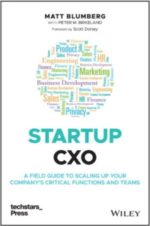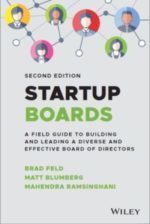Why Executive Searches are So Slow, and What You Can Do About That as a Candidate
It’s been a big break between posts – as many of you probably know, I moved to Board Chair and left the CEO role at Bolster last summer (it’s now in the very capable hands of my friend and co-founder Cathy Hawley), and I’m now CEO of a super cool AI company called Acrolinx. So yes, that means I went through a job search – and I found my ultimate job as a result of an inbound cold email from a headhunter! The rich irony in that as someone who founded an executive search platform is not lost on me.
So when a good friend of mine who is also between CEO gigs and looking at several opportunities asked me the other day “why is this process so slow, and what can I do about it?” I riffed with him on the theme for a bit and thought I’d share my thinking here.
Why Executive Searches are Slow
My top three reasons on this are pretty varied – there’s no specific theme.
- Boards aren’t efficient hiring managers. When hiring a CEO, even the best intentioned boards can be slow to move. Frequently they operate with a search committee, and even if there’s a lead director on the search committee or even no actual search committee, by design they need to operate with a high degree of consensus. Organizing five calendars to meet with or debrief on a candidate can take weeks. And a single loud voice saying “no” or “not sure” can paralyze a board. All this is true for a CEO search but can also be true when a less experienced CEO is trying to hire a CXO and needs a lot of Board involvement in the process. At Bolster, we’ve worked on mitigating this by getting the key decision-makers aligned on search criteria at the beginning of the search, prepping interviewers, and creating a scorecard for each candidate that is visible to all decision-makers, but sometimes that doesn’t matter.
- Boards and CEOs often don’t know what they want. Whether a company is hiring a role for the first time or replacing an executive, they often get to a generic job spec but don’t actually know what they’re looking for. Not all CEOs are created equal. Not all CROs have the same core competencies. At Bolster, we developed a description of role archetypes for each C-suite or Head-or role that helps with this process (eg for a CFO, do you want an Accounting type, a Finance/Ops type, or a Deal type?). But even if a Board or hiring CEO has this level of detail down, it can still be a murky picture, trapped between the company’s past successes and failures on one side and its future needs on the other. Processes move slowly because it take a while for the picture to become less murky – circumstances around the company evolve, or people see how the company operates without this role as others pick up the slack, and therefore the needs of the role shift or come into focus. Sometimes meeting a series of candidates is the only thing that can help drive this focus, and per the first bullet above, this just takes time. If a company has a strong search partner, that may speed things up via quick presentation of calibration candidates.
- There’s no precipitating crisis. Most companies and departments, most of the time, are not in crisis. A lot of companies can operate without a given executive, even a CEO, for quite some time. Some things done (don’t) get done. Other people rise to the occasion and pick up the most important items. Or the company has hired an interim or fractional executive as a stop gap measure. Without a specific and clear sense of urgency, searches often don’t have a driving force. Sometimes there’s a precipitating crisis like a system outage or massive customer churn or the company running out of cash that can provide that driving force, but that is not the norm.
What Can You as a Candidate Do About It?
The answer is probably “not much.” But if my own search was any indicator, I’d give you the same advice I give people internally at my company when they ask me how to get a promotion. My answer is “start doing the job today, don’t wait to actually get the job.” Obviously a candidate for a CEO role or any other executive role can’t actually start doing the job as an existing employee could start taking on additional pieces of work. But there are a lot of things you can do to “act as it” and get the hiring Board or hiring CEO’s attention. For example:
- As a CEO candidate, be a management consultant. Work on designing a strategy for the company you want to work for. Do a tremendous amount of homework you can do from the outside – read analyst reports, get stealth demos, do market and customer interviews. You don’t have to explain what you’re up to in terms of identifying the company. You can say you’re interviewing for a CEO role in the sector. Or even that you’re doing market research. But proactively sending the hiring board a strategy deck and asking for the next meeting is a good way of differentiating yourself as a candidate and potentially accelerating a process.
- As a CRO candidate, go try to sell the company’s product. Do it to a couple “friendlies” (e.g, people who are friends of yours, not active customers or prospects of the company you’re interviewing with) so you don’t tread on the actual business. But create your own deck. Get meetings. Write up your experience. Sending the CEO or board an email that says “Hey, I have a prospect already in the final stage of the funnel for you, can we work together to close her?” is a sure way to differentiate yourself as a candidate and potentially accelerate a process.
There may be a macro answer here as well. The market is still choppy, and boards and CEOs are more conservative in most sectors and subsectors than they are in go-go times. So that may be slowing things down in general and may even make it harder to act as-if. But that doesn’t mean you can’t try.



